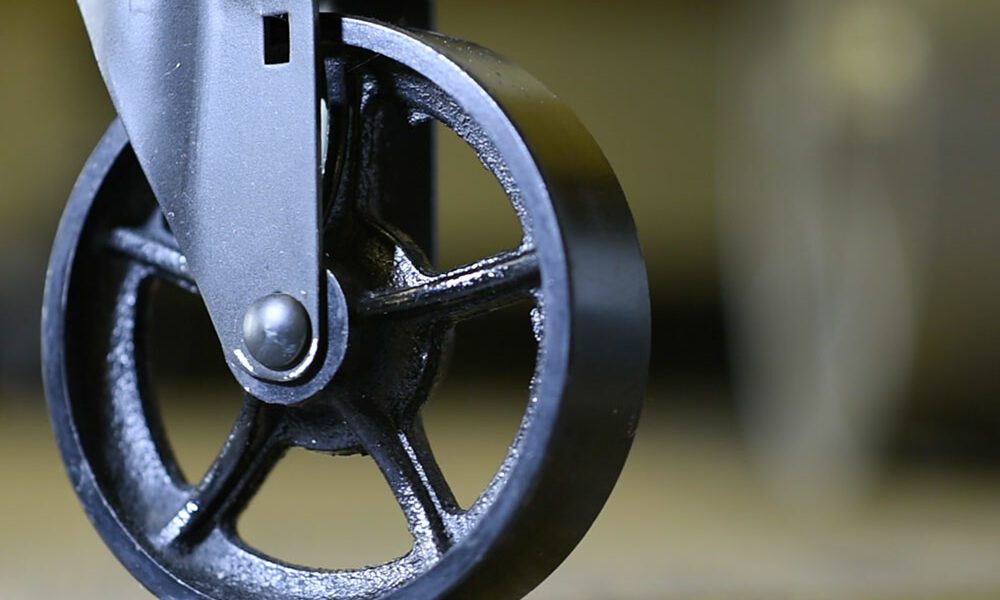The Integral Role of Steel Casters in Modern Industry

Introduction
Steel casters have become an indispensable component across many industries, seamlessly integrating into the fabric of modern manufacturing, healthcare, retail, and more. These seemingly simple devices are pivotal in enhancing mobility, efficiency, and the ergonomic handling of goods and equipment. This article aims to shed light on the multifaceted nature of steel casters, exploring their evolution, applications, and the ongoing advancements that continue to redefine their importance. By delving into both the challenges and future prospects, we uncover the profound impact steel casters have on our daily operations and the broader industrial landscape.
The Evolution of Steel Casters
Casters’ journey from their rudimentary beginnings to the highly specialized steel variants in use today is a testament to human ingenuity and the relentless pursuit of efficiency. In their earliest form, casters were simple wheels attached to furniture or heavy objects to facilitate movement. These early versions were primarily made from wood or metal, serving basic mobility needs without considering durability or load capacity.
As industrialization took root, the limitations of traditional materials became apparent. The need for more robust, durable, and versatile mobility solutions led to exploring alternative materials and designs. Enter steel, a material renowned for its strength, resilience, and capacity to withstand heavy loads. The transition to steel casters was driven by several key benefits that steel offered over its predecessors:
– Durability and Strength: Steel’s inherent properties allow it to resist impact, wear, and deformation under heavy loads, making steel casters ideal for industrial applications.
– Versatility: Steel can be engineered to various hardness levels and finishes, accommodating various applications, from heavy machinery to delicate medical equipment.
– Maintenance and Longevity: Steel casters require minimal maintenance and are less prone to rust and corrosion, especially when treated with modern coatings and finishes.
This evolution involved not only changing materials but also innovations in design and manufacturing techniques. Introducing precision bearings, enhanced wheel designs, and modular assemblies improved the performance and functionality of steel casters, making them indispensable in complex industrial setups.
Today, steel casters symbolize the Industrial Revolution’s ongoing legacy, embodying the principles of durability, efficiency, and innovation. They serve as a cornerstone in developing modern logistics, manufacturing, and beyond, enabling the seamless movement of goods and machinery across the globe.
Types and Features of Steel Casters
Steel casters come in various types, each designed to meet specific needs and applications. Understanding the differences between these types, along with their unique features, is essential for selecting the right caster for any given task. Steel casters are primarily categorized into two main types: swivel and rigid.
– Swivel Casters: These casters are designed for full 360-degree rotation, offering unparalleled maneuverability. Ideal for applications requiring versatile movement, such as in hospital beds or shopping carts, swivel casters allow for easy steering and changes in direction without the need to lift the equipment.
– Rigid Casters: Rigid or fixed casters, in contrast, are designed to move in a straight line. They are typically used where precise directional control is needed, such as in conveyor systems or heavy machinery dollies. Their simplicity offers robustness and greater load-bearing capacity.
Beyond the basic swivel and rigid designs, steel casters feature a range of specifications tailored to different uses:
– Wheel Composition: The wheel’s material can vary, including solid steel, rubber-coated steel, and polyurethane-coated steel. Each material offers different benefits, such as noise reduction, floor protection, and resistance to chemicals or temperatures.
– Load Capacity: Steel casters are rated by their maximum load capacity, which ranges from light-duty (a few pounds) to heavy-duty (several thousand pounds). This specification is crucial for ensuring the safety and longevity of the casters and the equipment they support.
– Wheel Diameter: The size of the caster’s wheel affects its mobility and load capacity. Larger wheels can distribute weight more effectively and navigate over obstacles more easily, making them suitable for outdoor use or uneven surfaces.
The diversity of steel caster types and features ensures that there is a solution for virtually any mobility requirement. The right steel caster can enhance efficiency, safety, and productivity from industrial manufacturing lines to delicate electronic equipment.
Applications of Steel Casters in Various Industries
Steel casters have become an indispensable tool across many industries, underscoring their versatility and their critical role in the operational efficiency and mobility of various sectors.
Manufacturing and Automation: Steel casters are used to move heavy machinery and equipment easily in the manufacturing sector. Their durability and load-bearing capacity make them ideal for transporting raw materials and finished products and even for integrating into automated production lines, facilitating seamless production processes.
– Healthcare and Hospitality: In healthcare facilities and hospitals, steel casters are on the front lines, attached to beds, medical equipment, and emergency service tools, ensuring smooth and quiet operation critical in such sensitive environments. Similarly, in the hospitality industry, they are used in service carts and movable furniture, combining strength with aesthetics to provide functionality and convenience.
– Retail and Logistics: The retail sector leverages steel casters in shopping carts and stock trolleys, enhancing the customer shopping experience through improved mobility. Logistics and warehousing are essential for the efficient handling and transportation of goods within the supply chain, enabling the rapid movement of pallets and containers.
This wide application spectrum not only highlights steel casters’ adaptability to various environments and requirements but also their contribution to enhancing productivity, safety, and ergonomics in workplaces.
Advancements in Steel Caster Technology
The steel caster industry is not static; it’s driven by continuous innovation to improve durability, efficiency, and environmental sustainability. Recent advancements include the development of high-performance coatings that extend the lifespan of casters by protecting against corrosion and wear. Innovations in wheel material technology, such as the introduction of noise-reducing and non-marking compounds, enhance the functionality of steel casters in sensitive environments like hospitals and clean rooms.
Moreover, the focus on sustainability has led to adoption of eco-friendly manufacturing processes and materials, reducing the environmental impact of producing steel casters. The industry also sees a trend towards integrating smart technology into casters, such as IoT sensors, to monitor usage, wear, and operational efficiency, paving the way for predictive maintenance and enhanced operational insights.
Challenges Facing the Steel Caster Industry
Despite the advancements, the steel caster industry faces several challenges. Wear and tear remain significant issues, particularly in heavy-duty applications, leading to maintenance and replacement costs. Moreover, the global nature of supply chains introduces vulnerabilities, such as price volatility and availability of raw materials, affecting production costs and lead times.
Environmental regulations and the demand for sustainable products also present challenges, pushing manufacturers to innovate in material usage and recycling practices without compromising quality or performance.
The future of steel casters looks promising, with emerging trends and technological advancements shaping the industry. The adoption of advanced materials and intelligent technologies is expected to increase, leading to casters that are more durable, efficient, and capable of self-diagnosis. The push for sustainability will also drive further innovations in eco-friendly manufacturing and recycling processes.
As automation and robotics continue to advance, the demand for specialized casters capable of operating in automated environments is likely to grow, further expanding the applications and capabilities of steel casters in various industries.
Ready to Enhance Your Mobility Solutions?
At Atlanta Caster, we understand steel casters’ pivotal role in modern industry. Our extensive range of high-quality steel casters is designed to meet the diverse needs of various sectors, from manufacturing to healthcare. Whether you require swivel casters for seamless maneuverability or rigid casters for precise directional control, our products are built to enhance efficiency, safety, and productivity.
Explore our catalog today to find the perfect steel caster for your application. If you have any questions or need personalized assistance, our expert team is here to help. Trust Atlanta Caster for durable, reliable, and innovative caster solutions tailored to your industry’s demands. Contact us now to learn more and take the first step toward optimizing your mobility needs!





